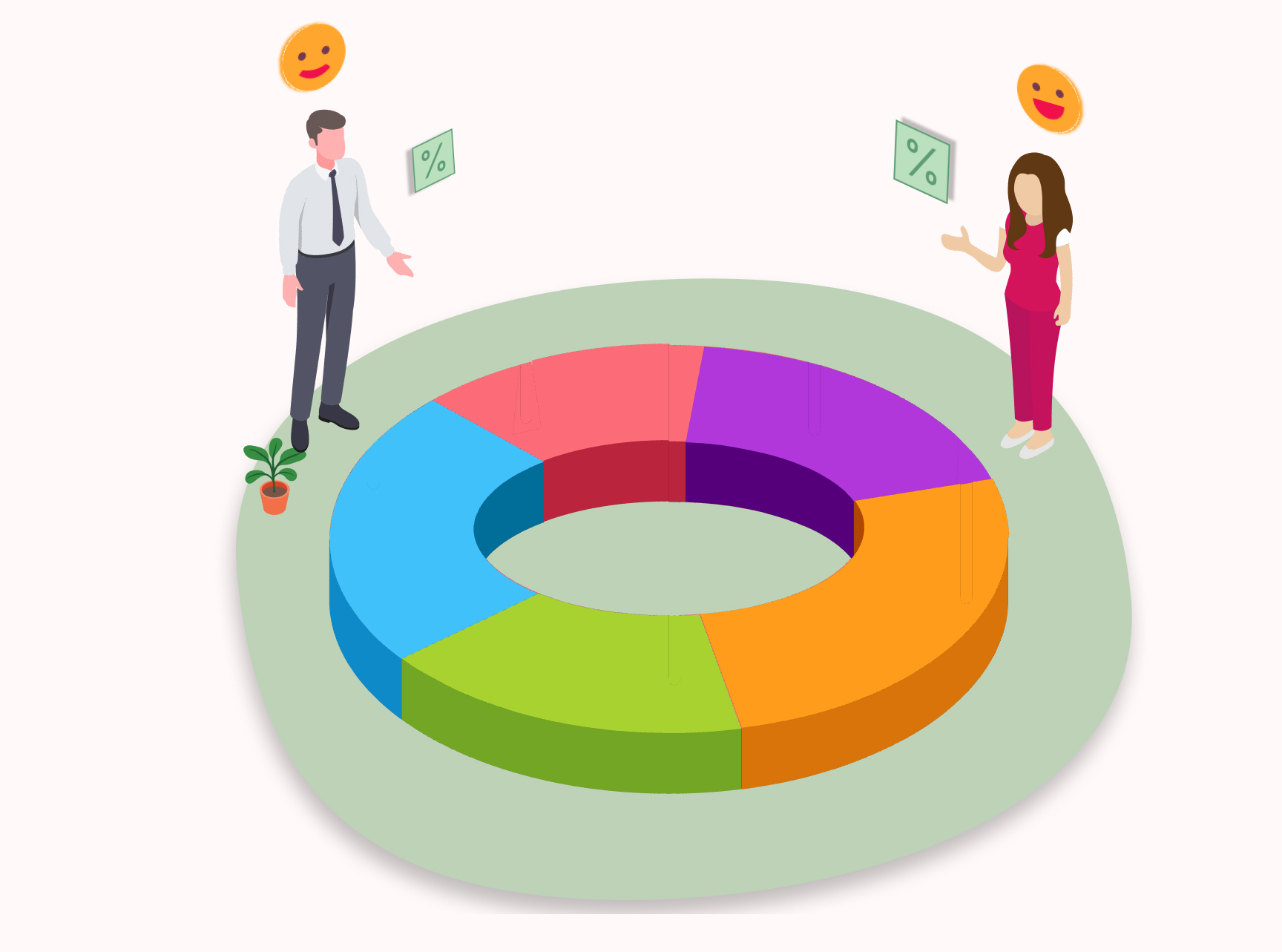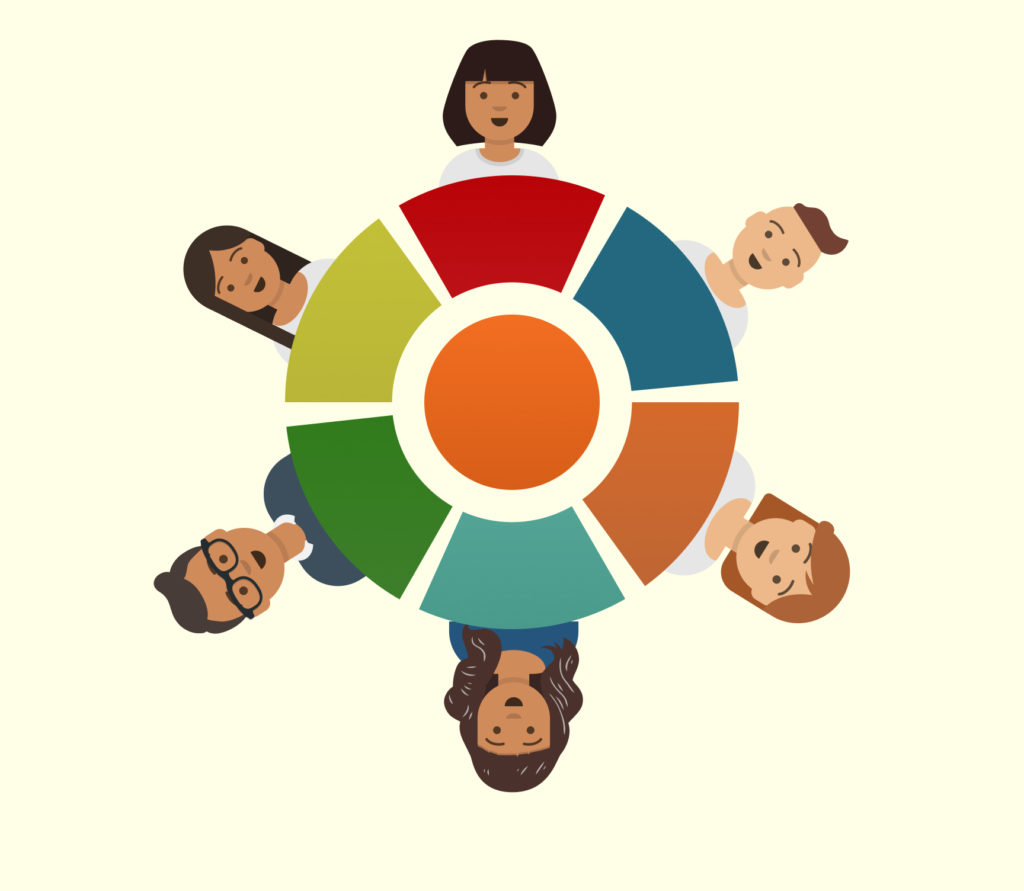

Behavioral Segmentation
The process of categorizing clients based on how they behave when making purchases is known as behavioral segmentation.
Let’s look at the numerous facts pertaining to behavioral segmentation in the most exact and fascinating manner possible. You can use this page as a comprehensive how-to for behavioral segmentation. We will examine many aspects of this market segmentation technique, including its significance, traits, forms, and techniques in this post.
Let us begin with the behavioral segmentation definition.
What is Behavioral Segmentation?
Behavioral segmentation, as its name suggests, is the division of an audience into groups according to their habits and behaviors. This extends beyond simply their purchasing patterns and also covers their internet activities.
For this type of research generally, questions about their behavior or personal choices are made. For example, which social media platforms do they use? When are they at their busiest? Which newspapers and news outlets do they follow? Similarly, you can ask other questions as well.
This helps you understand the particular requirements and preferences of various audience groups. As a result, you may use it to create a more intelligent, multifaceted marketing approach.
You must remember that using behavioral segments alone is not recommended. Instead, it should support other forms of segmentation and give them additional depth and context.
Create a free survey to implement Behavioral Segmentation
Objectives of Behavioral Segmentation
The fundamental goal of this type of segmentation is to comprehend client requirements and wishes by providing something special based on how they behave while making a purchase of a good or service. Additionally, it enables businesses to target prospective customers with personalized items for marketing.
Let us have a quick look at the main objectives of behavioral segmentation:
- Permit businesses to identify the rivals and brands that customers most frequently choose to purchase.
- By developing marketing methods that are specific to a certain market niche, you can raise the possibility that someone will purchase.
- Depending on the behavior that customers display, create behavioral segments.
- Determine the needs that your product or service satisfies for each segment.
- Make changes to the goods or services to meet customer needs.

Behavioral Segmentation Examples
Let us now have a look at some examples of this segmentation technique. Various companies and famous brands have used behavioral segmentation as their strategy for growth.
One such example is how the ‘Olay’ company used this concept and gained a noticeable share of the market. When developing its Skin Advisor, the American skincare company Olay used benefits-based behavioral segmentation.
Customers are surveyed by the artificial intelligence beauty product by way of five to seven brief questions regarding their skin. The advisor then discloses the client’s skin’s true age and makes product recommendations in line with that information.
Olay can get information that can inform the creation of its products by posing questions to its clients about their skincare routines and preferences. This allows the company to release goods that are the most popular and pertinent to its audience.
For instance, Olay discovered through its Skin Advisor app that a significant portion of its customer base preferred fragrance-free goods. Initially, the ‘Olay’ development team did not even consider these goods, but they were later put into production.
When data from the Advisor showed that many customers were looking for Retinol-based products and the consequent lack of Retinol items in its line was causing the brand to lose business, Olay took the same action. Olay responded by launching Retinol 24, which has since become one of the brand’s best-selling items and has significantly increased its sales.
Thus, it was all about an instance among numerous examples of behavioral segmentation in marketing.
Create your own Behavioral Segmentation survey to see how it applies to you
Types of Behavioral Segmentation
Depending on how applicable they are to your firm and the specific features of the goods and services you market, you can mix different segmentation techniques. So let us have a look at various types of behavioral segmentation.
Based on Client Loyalty
Find out which clients your loyalty programs should be targeted at and which may not be receiving enough value from your business.
Since they have the highest lifetime value, loyal customers are the most advantageous customers for any business. It is less expensive to keep current clients than to find new leads. Additionally, devoted customers are more inclined to become brand ambassadors and talk about your company on their social networks.
You can make use of NPS surveys to gauge customer loyalty and promote the brand. NPS gauges how loyal customers are to a business and how likely they are to promote it.
A higher NPS score is preferable as it tells you that your customer will promote the brand. NPS scores are determined by a single-question survey and published with a number ranging from -100 to +100. The gold standard customer experience statistic, NPS®, is frequently cited.
Create a free NPS survey to gauge your customer loyalty
Based on Customer Feedback
This sort of segmentation is founded on consumer feedback. When customers are unhappy with the goods, it helps to address the problem right away, before they criticize your company. Moreover, it also makes it easier to maintain positive connections with existing customers.
Try getting feedback from your customers NOW!
Based on Occasion
This type of segmentation bases the delivery of your marketing communications on a certain time period.
Depending on the user’s area, leverage marketing holidays like Black Friday, Cyber Monday, or national holidays. Use key occasions like their birthday or anniversary to your advantage. Be mindful of the times of day and days of the week that are most conducive to conversation.
Gather personal information via surveys, lead magnets, and subscription forms to enable occasion-based segmentation. You may increase your campaigns’ open rates and create a favorable perception of your brand with the aid of these insights.
As per the Lifecycle Stage
Selling goods and services with long lifecycle benefits from behavioral segmentation based on a lifecycle stage.
Because you can’t make a determination based on a single touchpoint, mapping the user’s lifecycle is difficult. Collect data on all touchpoints through all of your marketing channels, including emails, social media, search engines, and chatbots, to deal with it.
Determine the user’s lifecycle stage, then deliver more pertinent and worthwhile nurturing content, and eventually offers, to nudge them toward making a purchase.
Considering Benefits
This is a strategy to segment clients based on the advantages they seek and encourage them to purchase your goods or services.
For instance, there are numerous benefits to chewing gum, such as clean teeth, fresh breath, a tasty flavor, and stress-relieving properties. Find out which advantages encourage clients to make a purchase and highlight those.
Create a survey and try these various types of Behavioral Segmentation
Benefits of Behavioral Segmentation
There are numerous benefits of Behavioral segmentation. Let’s have a quick look at some of them.
Increases Brand Loyalty for Your Business
Utilizing this segmentation technique enables you to understand how to assist users throughout their client journey and maintain constant engagement.
Consumers who feel valued will continue with brands that give them that feeling. Customer retention boosts customer lifetime value and, consequently, income for your company. People are more inclined to stick with your company and become brand supporters when they are treated with respect.
Personal Connection with Audience
Thankfully, the days of sending the same basic message to everyone on your email marketing lists are long gone.
You may establish a personal connection with each member of your audience and make offers and ideas that are more likely to be accepted by taking into account their requirements, interests, and problems as well as the kinds of messages they pay attention to.
Reduces Cost
Using behavioral segmentation, you can prioritize campaigns to increase the efficiency of your marketing. It enables you to communicate with an indifferent audience or warm up leads with less effort and time.
Behavioral Forecasting
A segment’s potential behavior can also be predicted using past behavioral trends. This assists you in planning ahead and seeking out means of influencing the result.
Increases the Precision of Targeting
Utilizing behavioral differences to their advantage, businesses can use this segmentation technique to optimize their marketing communications.
For instance, choosing the appropriate strategy for new subscribers or regular consumers can be helpful. Additionally, it clarifies the demographics of your target market. The target market can be adolescents, youngsters, actors, corporate employees, government workers, or others based on the nature and purpose of your research.
Create a Behavioral Segmentation Survey and reap the benefits NOW!
Conclusion
When done right, behavioral segmentation has several advantages, from fostering client loyalty to enhancing customer experiences. When combined with the other market segmentation techniques, you get a massive insight into your customers needs and wants, that helps you precisely tailor your marketing campaign. Hope this has been helpful to you, if you want any other information, do let us know in the comments section. See you in the next blog.
For backlinks and collaborations, please mail at maria@fynzo.com.







